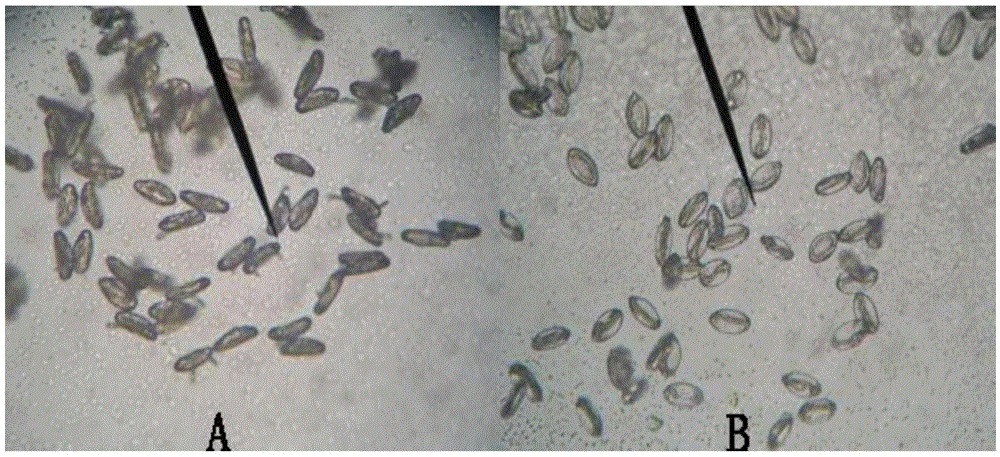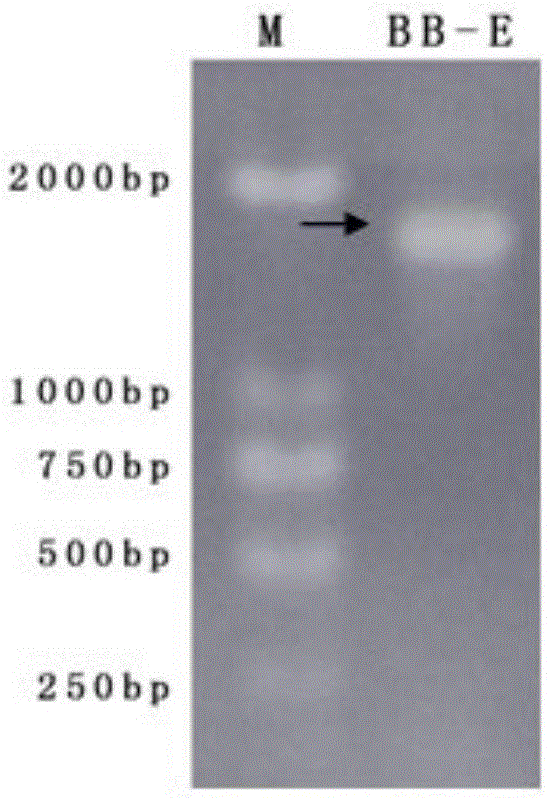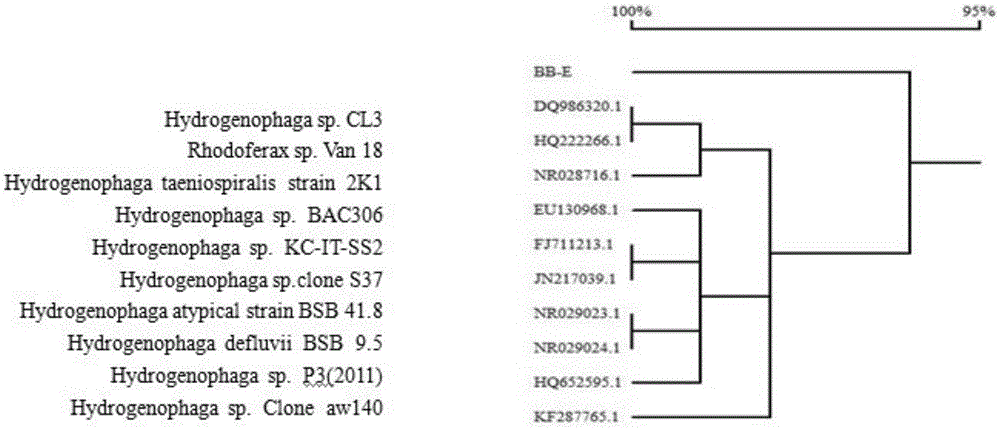Hydrogenophagasp and application thereof to prevention and treatment of wheat powdery mildew
A technology for wheat powdery mildew and hydrogenophilus, which is applied in the field of microorganisms and their microbial applications
- Summary
- Abstract
- Description
- Claims
- Application Information
AI Technical Summary
Problems solved by technology
Method used
Image
Examples
Embodiment 1
[0020] The screening of embodiment 1 hydrogenophilic bacteria BB-E
[0021] A proper amount of soil samples were taken from the wheat planting area in the western suburbs of Zhengzhou by the five-point sampling method, put into sterile polyethylene plastic bags, and sealed. Separation and purification of bacterial strains by dilution plate separation method, mixing bacterial fermentation liquid with 3% agarose in a melted state (1:1) before solidification, and dripping on a concave slide to prepare a mixed culture medium for fermentation liquid. The 1.5% agar medium of wheat powdery mildew was taken as a control, and the fresh spores of wheat powdery mildew were shaken off in the medium, cultured for 48 hours, the germination rate of wheat powdery mildew spores was counted, and the inhibition rate of spore germination was calculated.
Embodiment 2
[0022] Morphological analysis and physiological and biochemical identification of embodiment 2 hydrogenophilic bacteria BB-E
[0023] Microscopic observation found that the bacterial BB-E colonies were evenly distributed, with low bulges, smooth edges, light yellow, smooth texture, moist, and translucent.
[0024] Physiological and biochemical identification of the strains, the results are shown in Table 1.
[0025] Table 1 Physiological and biochemical identification results of antagonistic bacteria BB-E
[0026]
[0027] Note: "+" means positive; "-" means negative.
[0028] According to the physiological and biochemical identification results of the bacteria, combined with the "Berger's Bacterial Identification Manual", the description of the characteristics of the hydrogen-phagic bacteria is more consistent with the bacteria BB-E, and BB-E is initially identified as a hydrogen-phagic bacteria.
Embodiment 3
[0029] The 16rDNA sequence identification of embodiment 3 hydrogenophilic bacteria BB-E
[0030] Genomic DNA was extracted, and 16SrDNA sequence universal primers were used for PCR amplification, and a 1.0% concentration of agarose gel electrophoresis was used to detect that an amplified fragment with a length of about 1500bp was the 16SrDNA sequence of the antagonistic bacterium BB-E ( figure 2 ).
[0031] The target DNA fragment was recovered, purified, cloned and sequenced to obtain a sequence of 1490bp in size. The sequence was searched and compared using the BLAST tool in the biological information database NCBI. The results are shown in image 3 . Select highly similar strains with definite species status from the BLAST comparison results, obtain their 16S rDNA sequences, and use DNAMAN software to construct a phylogenetic tree ( image 3 ).
[0032] Establish a phylogenetic tree based on these 11 strains, such as image 3 As shown, the species status among the stra...
PUM
 Login to View More
Login to View More Abstract
Description
Claims
Application Information
 Login to View More
Login to View More - R&D
- Intellectual Property
- Life Sciences
- Materials
- Tech Scout
- Unparalleled Data Quality
- Higher Quality Content
- 60% Fewer Hallucinations
Browse by: Latest US Patents, China's latest patents, Technical Efficacy Thesaurus, Application Domain, Technology Topic, Popular Technical Reports.
© 2025 PatSnap. All rights reserved.Legal|Privacy policy|Modern Slavery Act Transparency Statement|Sitemap|About US| Contact US: help@patsnap.com



